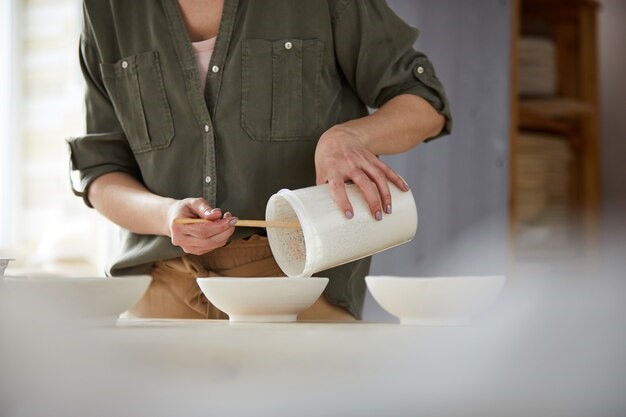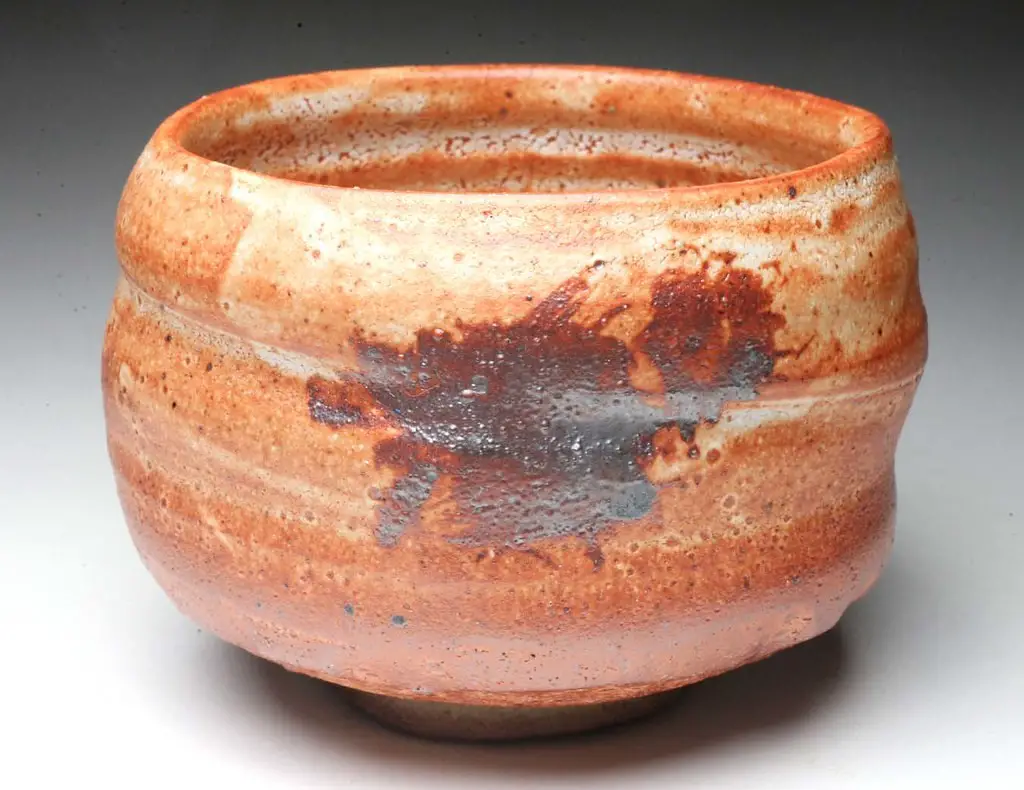Shino glazes are famous for the orange peel texture they bring to pottery. They are created with a careful balancing act between chemistry and skill. They are defects in design but so exquisite that artists can’t help but decorate their pieces with them. The desired texture is achieved through mixing components such as Spodumene, redart, kaolin, soda ash, and nepheline syenite. The glaze is then applied to the pot and fired in a kiln.
What is Shino Glaze?
Japan’s extensive history of pottery-making is the source of the intriguing history of Shino glazes. Because of these specific glazes’ properties, artisans have prized them for hundreds of years. Shino glazes create impressions of their understated cracking patterns, calming orange tones, and milky white hues, creating an exquisite yet rustic look. It’s like capturing the essence of the splendor of nature in a masterwork of ceramics. Shino glazes are genuinely appealing because of their capacity to accept flaws and transform them into works of beauty. They invite us to appreciate each item’s delicate intricacies and subtle subtleties, reminding us that perfection is found in the flaws. Shino glazes provide a window into the spirit of Japanese ceramics, highlighting its ageless charm, simplicity, and beauty.
What are the Ingredients of Orange Peel Texture Shino Glaze?
We must examine the ingredients in Shino glazes to understand how we get that unique texture akin to an orange peel. To do this, we mix a few key components:
First, there is a substance known as Nepheline Syenite. The glaze’s texture comes from a unique rock. It contains a lot of alumina, which gives the glaze its rough, peel-like texture.
Next, we have Spodumene. This mixture helps the glaze melt and disperse. It also functions as everything’s binding agent.
Kaolin is the next in line. This particular clay helps the glaze bond to the ceramics; the glaze would slide out without it.
Another crucial component is soda ash. The type of salt used in the glaze gives it its color, similar to the paint we use to achieve the perfect glazing appearance.
And lastly, Redart. It is what separates and lends the glaze its lovely color. It adds that extra pop to the glaze.
When all these components are mixed, they create the specific texture and color that give Shino glazes unique appeal. Every element plays a role in making the orange-peel texture.
For more clarity, follow the instructions in the table below to create your own Shino glaze with an orange peel texture.
| Ingredient | Percentage |
| Nepheline Syenite | 50% |
| Spodumene | 15% |
| Kaolin | 20% |
| Soda Ash | 10% |
| Redart | 5% |
How Do You Create the Orange Peel Texture in Shino Glaze?

You must have understood that creating the orange peel texture in Shino glazes is a mix of science and art. When you make the recipe for the glaze, it’s nothing but chemistry at work. But your job is not done yet. There’s a process to making the orange peel texture in Shino glaze. Follow the process given below carefully to get the desired results:
- Start by collecting and measuring the critical Shino glaze ingredients in the correct proportions. The table above already gives these ingredients and the correct proportions. So, ensure you have the required ingredients because it will only work once all the components are in the proper proportions.
- Now, thoroughly mix all the dry ingredients to ensure they blend consistently. This step might seem mundane, but it is essential to guarantee the uniform distribution of materials in the glaze.
- Slowly add water to the dry mix. Remember to stir continuously to get a smooth and creamy texture in the glaze mixture. This consistency is best for adequately applying the glaze to the pot of your choice.
- Now, use your method to apply the Shino glaze to the bisque-fired clay pottery pieces. You can brush, spray, or dip the Shino glaze. Just ensure the glaze is applied evenly throughout the pottery’s surface.
- Let the glazed pot dry completely before sending it into the fire. Drying is essential because the glaze will stick well to the surface and reduce issues that could arise during firing.
- Place the dried pot into the kiln for firing next. You have to fire them in a reduction atmosphere at cone 10. Remember always to follow the recommended temperature and duration for the Shino glaze. Monitor the kiln to ensure the firing process is going well. The Shino glaze will create the orange peel texture you want during this stage. Make sure you are working with a suitable kiln. Several firing kilns are available in the market, but the Table Top RapidFire Kiln is one of the best. It ensures high-quality firing without any pottery being burned.
Conclusion
The orange peel texture of the Shino glaze has fascinated artists for decades. To get your pottery the orange peel texture of Shino Glaze, use the recipe above and follow the instructions.







